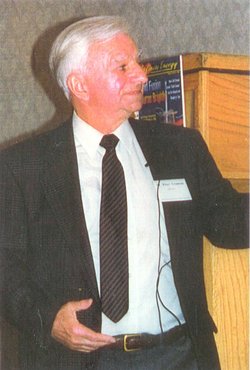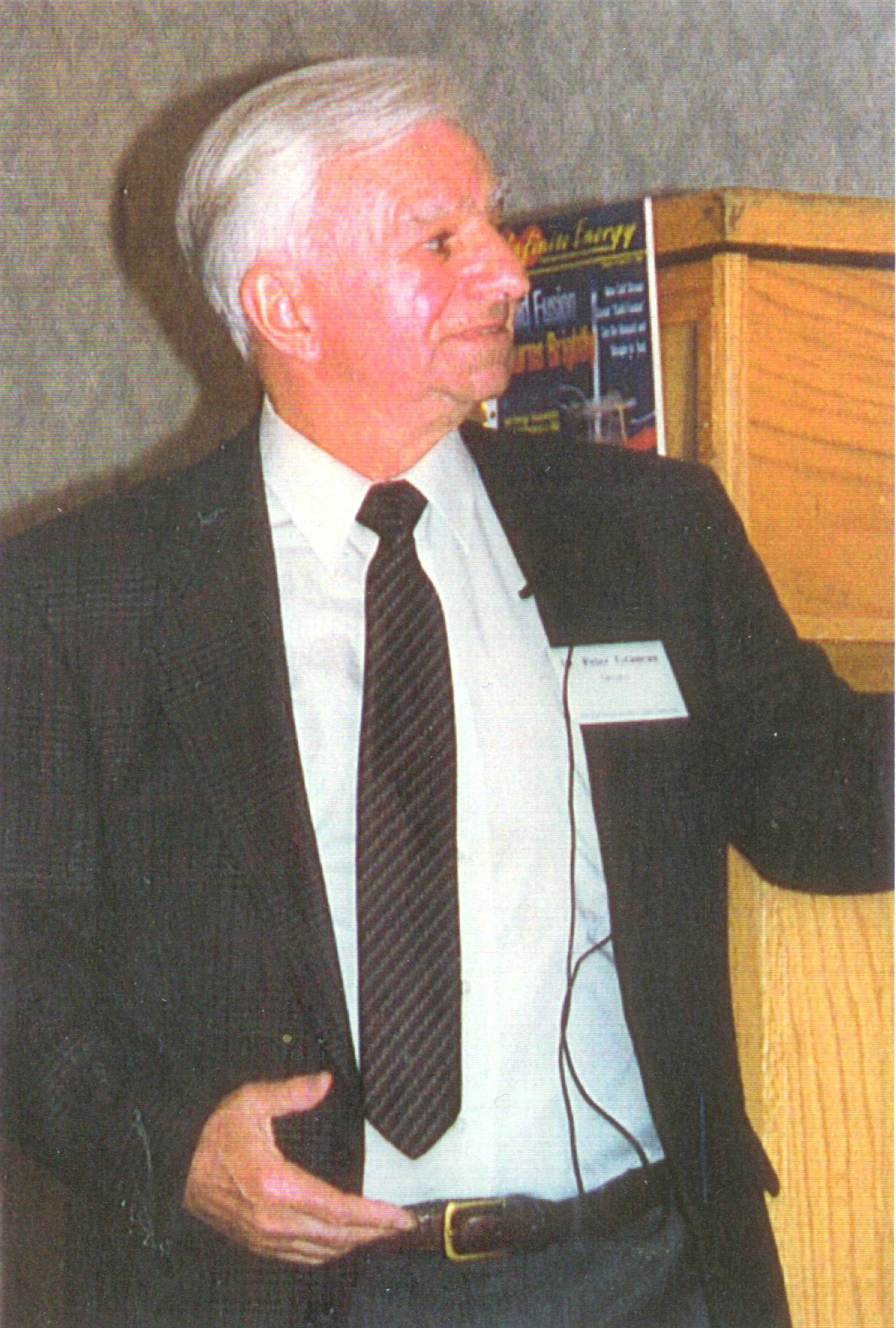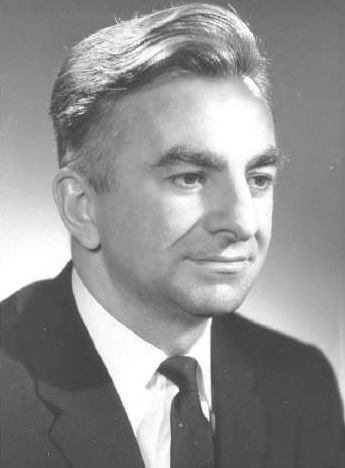After university, he joined a large industrial laboratory (British Insulated Callender's Cables) as assistant research manager and his aim was to bring about collaboration between industry and academia, at that time not a common practice. He was very successful in initiating many joined projects especially in the advancement of standard electrical cables, developing novel forms of electrical energy transmission and even contributing to the electrification of Britain's railway network.
In the early 1960's, he was asked to serve on a US committee under the auspices of the "Highway Beautification Act", championed by Lady Bird Johnson. His part in the grand scheme to improve the urban and rural US landscape was to underground the unsightly electrical overhead power corridors that blight the environment. He eventually forged a conglomerate of Simplex Wire & Cable, Arthur D. Little and MIT and in 1967, together with his wife and son, moved to Concord, Massachusetts to lead this project.
As a consequence of the Vietnam war, the funding for this enormous enterprise was withdrawn and he formed a consulting company called Underground Power Corporation and at the same time established an electrodynamics and power transmission laboratory at MIT with funding from the US National Science Foundation and Department of Energy. There he developed promising novel power transmission prototypes such as cryogenically cooled and sodium power cables and high voltage switchgear and filed many patents in the field. This work culminated in his first book, Underground Power Transmission (Wiley, 1979).
In his MIT laboratory in the late 1970's, he was also able to follow up lines of thought that had originally arisen in his PhD work. Research into the history, derivation and his recent experimental confirmations of the original law of electrodynamics proposed by Andre Marie Ampère, provided a revolutionary insight into the inconsistencies within currently taught physics. It also shone a beacon into how modern physics could be simplified and rationalised by a return to the Newtonian concept of "Instantaneous Action At A Distance". This work would remain the basis and motivation for his research throughout the remainder of his career. He was able to take advantage of the "in house" computer skills of his teen-age son to perform all of the calculations required to model the early electrodynamics experiments. This close scientific collaboration has continued until today and was a great pleasure for both men. His first book on the subject was entitled Ampere-Neumann Electrodynamics of Metals (Hadronic Press, 1984). While his son, Dr. Neal Graneau, was at Oxford University, UK, they co-authored two further books in this area, Newton vs. Einstein: How Matter Interacts with Matter (Carlton Press, 1993) and Newtonian Electrodynamics (World Scientific, 1996).
During the 1980's – 90's, he was also a visiting professor at Northeastern University, Boston MA. During this time, he formed an international research team engaged in the high current pulsed arc liberation of stored hydrogen bond energy from water. He published more than a dozen papers in this area which has opened the door to a vast new source of clean and renewable energy. It is still an active area of research in the UK and The Netherlands.
His last book, also co-authored with his son, In the Grip of the Distant Universe: The Science of Inertia (World Scientific, 2006), explored the philosophical ramifications of his earlier electromagnetism work and applied it to understanding the fundamental force of inertia. The primary implication is that the inertia that we feel on earth and which makes all objects resist acceleration in proportion to their mass, is due to instantaneous force interactions between every atom and every other atom in the universe. This highly thought provoking "preconventional" concept contradicts much of the philosophy of modern physics, but agrees with all known experiments and provides a vastly simpler framework with which to understand the laws of nature.
In 2006, he became an editor of the US journal "Infinite Energy" and was able to contribute more broadly to unconventional energy research as well as furthering his renewable energy interests by promoting the science of liquid bond energy liberation for the benefit of mankind. In 2009, he received the Sagnac award from the Natural Philosophy Alliance "in recognition of a lifetime commitment to excellence in scientific pursuit, for experiments in water plasma explosions and railgun recoils, and for theoretical presentations of Amperian longitudinal forces, instantaneous Machian interactions, and the unique role of water in renewable energy." His publication list of 5 books and around 150 refereed publications leaves a lasting legacy in the fields of physics and engineering.
He is survived by his wife, Brigitte, an advisor in Fine Art. They were married in Buckfast Abbey, England in 1955 and their son Neal was born in London in 1963. After their move to the US in 1967, they made their home in Concord, where he loved to write, play tennis, sail and he thoroughly enjoyed life in the woods. Throughout his career, he nevertheless performed experiments in many laboratories throughout North America and Europe and especially enjoyed his professional visits to his son's pulsed power laboratory at the University of Oxford, UK. He was proud to have become one of Concord's authors, and will be laid to rest there in Sleepy Hollow Cemetery.
A Memorial service will be held on Tuesday, March 4th at 3:00 PM in the Duvall Chapel, Deaconess Rd, Newbury Court, Concord MA. A private family burial will be held in Sleepy Hollow Cemetery. Funeral arrangements are under the care of Susan M. Dee and Charles W. Dee, Jr., Dee Funeral Home of Concord. To Share a remembrance in Dr. Peter Graneau's guest book visit www.deefuneralhome.com.
After university, he joined a large industrial laboratory (British Insulated Callender's Cables) as assistant research manager and his aim was to bring about collaboration between industry and academia, at that time not a common practice. He was very successful in initiating many joined projects especially in the advancement of standard electrical cables, developing novel forms of electrical energy transmission and even contributing to the electrification of Britain's railway network.
In the early 1960's, he was asked to serve on a US committee under the auspices of the "Highway Beautification Act", championed by Lady Bird Johnson. His part in the grand scheme to improve the urban and rural US landscape was to underground the unsightly electrical overhead power corridors that blight the environment. He eventually forged a conglomerate of Simplex Wire & Cable, Arthur D. Little and MIT and in 1967, together with his wife and son, moved to Concord, Massachusetts to lead this project.
As a consequence of the Vietnam war, the funding for this enormous enterprise was withdrawn and he formed a consulting company called Underground Power Corporation and at the same time established an electrodynamics and power transmission laboratory at MIT with funding from the US National Science Foundation and Department of Energy. There he developed promising novel power transmission prototypes such as cryogenically cooled and sodium power cables and high voltage switchgear and filed many patents in the field. This work culminated in his first book, Underground Power Transmission (Wiley, 1979).
In his MIT laboratory in the late 1970's, he was also able to follow up lines of thought that had originally arisen in his PhD work. Research into the history, derivation and his recent experimental confirmations of the original law of electrodynamics proposed by Andre Marie Ampère, provided a revolutionary insight into the inconsistencies within currently taught physics. It also shone a beacon into how modern physics could be simplified and rationalised by a return to the Newtonian concept of "Instantaneous Action At A Distance". This work would remain the basis and motivation for his research throughout the remainder of his career. He was able to take advantage of the "in house" computer skills of his teen-age son to perform all of the calculations required to model the early electrodynamics experiments. This close scientific collaboration has continued until today and was a great pleasure for both men. His first book on the subject was entitled Ampere-Neumann Electrodynamics of Metals (Hadronic Press, 1984). While his son, Dr. Neal Graneau, was at Oxford University, UK, they co-authored two further books in this area, Newton vs. Einstein: How Matter Interacts with Matter (Carlton Press, 1993) and Newtonian Electrodynamics (World Scientific, 1996).
During the 1980's – 90's, he was also a visiting professor at Northeastern University, Boston MA. During this time, he formed an international research team engaged in the high current pulsed arc liberation of stored hydrogen bond energy from water. He published more than a dozen papers in this area which has opened the door to a vast new source of clean and renewable energy. It is still an active area of research in the UK and The Netherlands.
His last book, also co-authored with his son, In the Grip of the Distant Universe: The Science of Inertia (World Scientific, 2006), explored the philosophical ramifications of his earlier electromagnetism work and applied it to understanding the fundamental force of inertia. The primary implication is that the inertia that we feel on earth and which makes all objects resist acceleration in proportion to their mass, is due to instantaneous force interactions between every atom and every other atom in the universe. This highly thought provoking "preconventional" concept contradicts much of the philosophy of modern physics, but agrees with all known experiments and provides a vastly simpler framework with which to understand the laws of nature.
In 2006, he became an editor of the US journal "Infinite Energy" and was able to contribute more broadly to unconventional energy research as well as furthering his renewable energy interests by promoting the science of liquid bond energy liberation for the benefit of mankind. In 2009, he received the Sagnac award from the Natural Philosophy Alliance "in recognition of a lifetime commitment to excellence in scientific pursuit, for experiments in water plasma explosions and railgun recoils, and for theoretical presentations of Amperian longitudinal forces, instantaneous Machian interactions, and the unique role of water in renewable energy." His publication list of 5 books and around 150 refereed publications leaves a lasting legacy in the fields of physics and engineering.
He is survived by his wife, Brigitte, an advisor in Fine Art. They were married in Buckfast Abbey, England in 1955 and their son Neal was born in London in 1963. After their move to the US in 1967, they made their home in Concord, where he loved to write, play tennis, sail and he thoroughly enjoyed life in the woods. Throughout his career, he nevertheless performed experiments in many laboratories throughout North America and Europe and especially enjoyed his professional visits to his son's pulsed power laboratory at the University of Oxford, UK. He was proud to have become one of Concord's authors, and will be laid to rest there in Sleepy Hollow Cemetery.
A Memorial service will be held on Tuesday, March 4th at 3:00 PM in the Duvall Chapel, Deaconess Rd, Newbury Court, Concord MA. A private family burial will be held in Sleepy Hollow Cemetery. Funeral arrangements are under the care of Susan M. Dee and Charles W. Dee, Jr., Dee Funeral Home of Concord. To Share a remembrance in Dr. Peter Graneau's guest book visit www.deefuneralhome.com.
Sponsored by Ancestry
Advertisement
Advertisement




